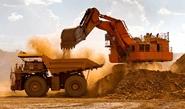Product

March 24, 2018
Construction Employment Continues to Expand
Written by Sandy Williams
The construction industry continues to add jobs despite a shortage of skilled workers, said the Associated General Contractors of America. In an analysis of Labor Department data, AGC said 35 states and the District of Columbia added jobs between February 2017 and February 2018, while 38 states added construction jobs between January and February.
Association officials praised the latest congressional spending bill for funding career and technical education to help young workers get into the industry.
“Rebuilding career and technical education programs is essential for helping the economy expand and assure a supply of qualified construction workers,” said Stephen E. Sandherr, the association’s chief executive officer. “The funding bill that Congress approved on Thursday is a good step in that direction.”
California added the most construction jobs (74,000 jobs, 9.8 percent) during the past year. Other states adding a high number of new construction jobs for the past 12 months include Texas (33,900 jobs, 4.8 percent) and Florida (31,700 jobs, 6.3 percent). West Virginia added the highest percentage of new construction jobs during the past year (14.3 percent, 4,300 jobs), followed by Nevada (10.9 percent, 8,900 jobs), California, Idaho (9.3 percent, 4,100 jobs), Arizona (9.2 percent, 13,000 jobs) and New Mexico (9.0 percent, 4,000 jobs).
Fourteen states shed construction jobs between February 2017 and February 2018, while construction employment was unchanged in Vermont. North Dakota lost the highest percentage of construction jobs, by far (-16.3 percent, -4,800 jobs), followed by Iowa (-8.5 percent, -6,700 jobs), Kansas (-5.3 percent, -3,300 jobs) and Nebraska (-4.2 percent, -2,200 jobs). Iowa lost the largest number of jobs, followed by North Dakota, Missouri (-4,000 jobs, -3.2 percent) and Kansas.
“The states with the largest job gains were all recovering from natural disasters, while losses were concentrated in the Plains states,” said AGC chief economist Ken Simonson. “The Plains states have been hurt by a downturn in farm-related income.”
Thirty-eight states added construction jobs between January and February. New York added the most (7,700 jobs, 2.0 percent), followed by Florida (7,100 jobs, 1.4 percent) and California (6,800 jobs, 0.8 percent). Connecticut added the highest percentage of construction jobs for the month (2.6 percent, 1,500 jobs), followed by Mississippi (2.0 percent, 900 jobs), Indiana (2.0 percent, 2,800 jobs) and New York.
Eleven states lost construction jobs between January and February, while construction employment was unchanged in Alabama and Washington, D.C. Washington state lost the most construction jobs for the month (-1,500 jobs, -0.7 percent), followed by Alaska (-800 jobs, -5.0 percent) and Kansas (-700 jobs, -1.2 percent). Alaska lost the highest percentage of construction jobs, followed by Montana (-2.1 percent, -600 jobs) and Kansas.







